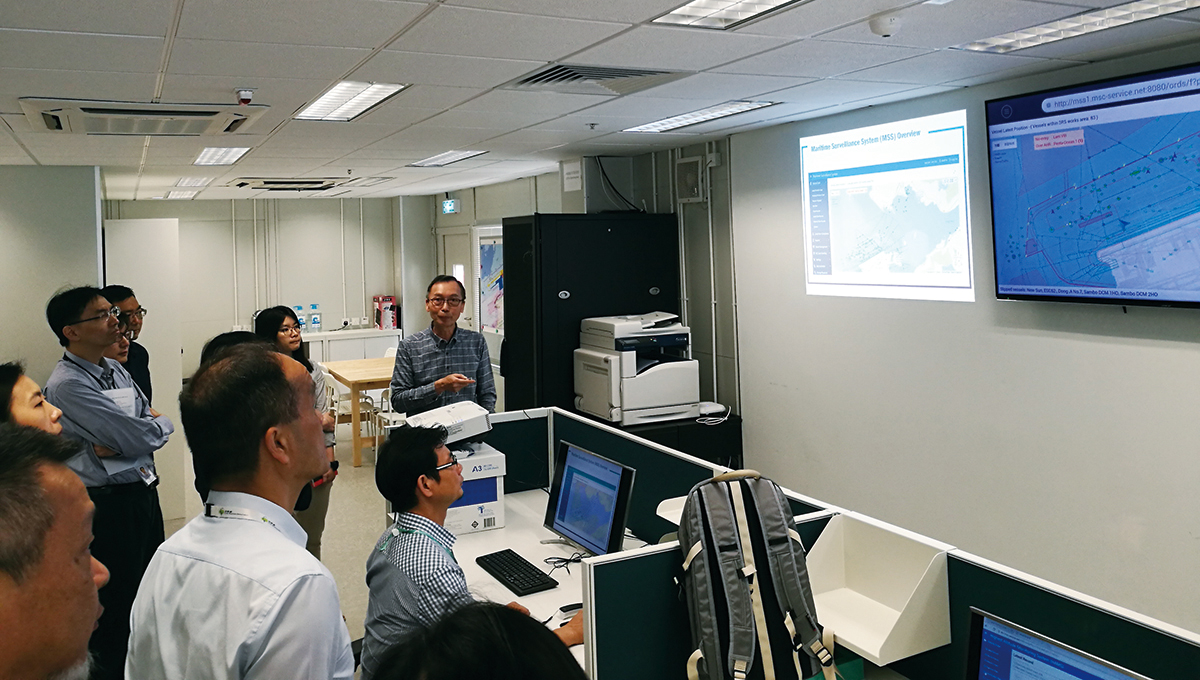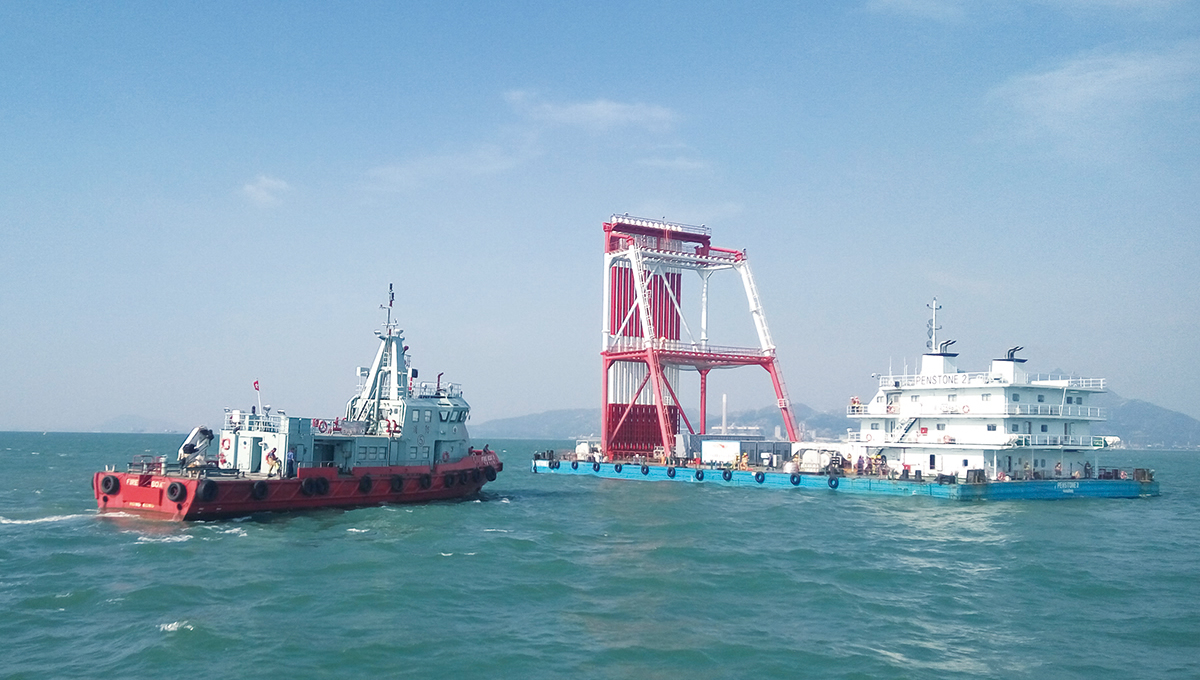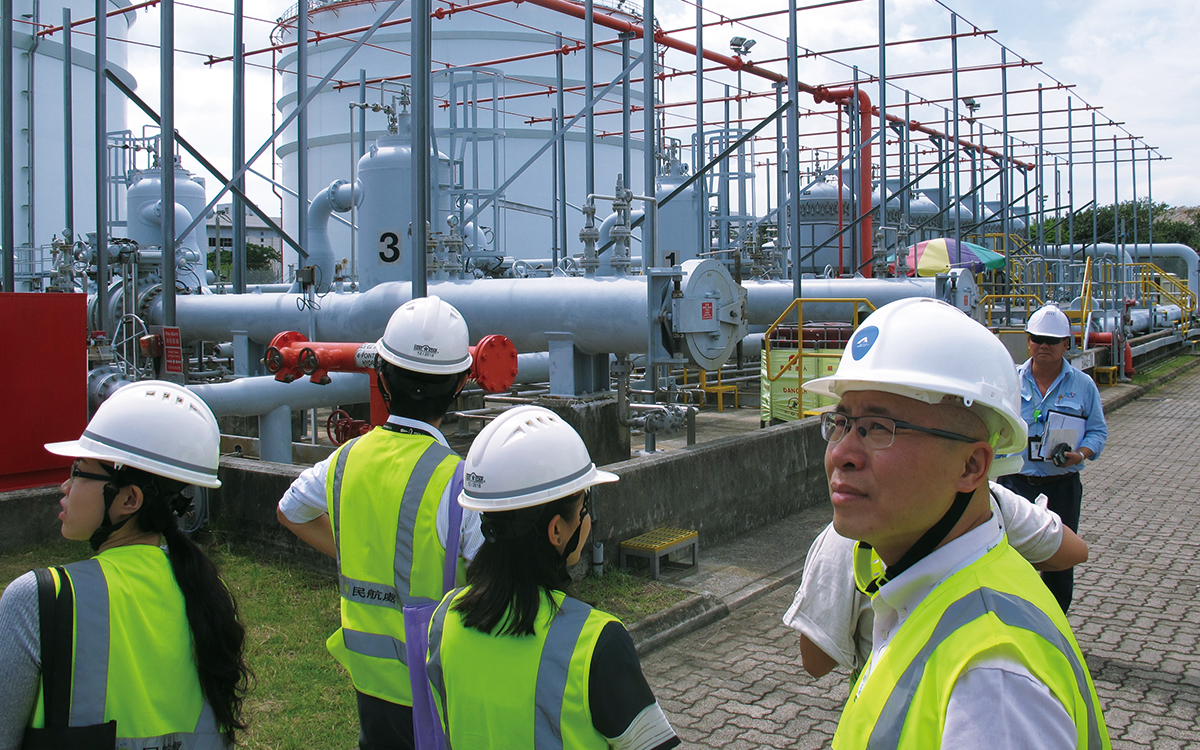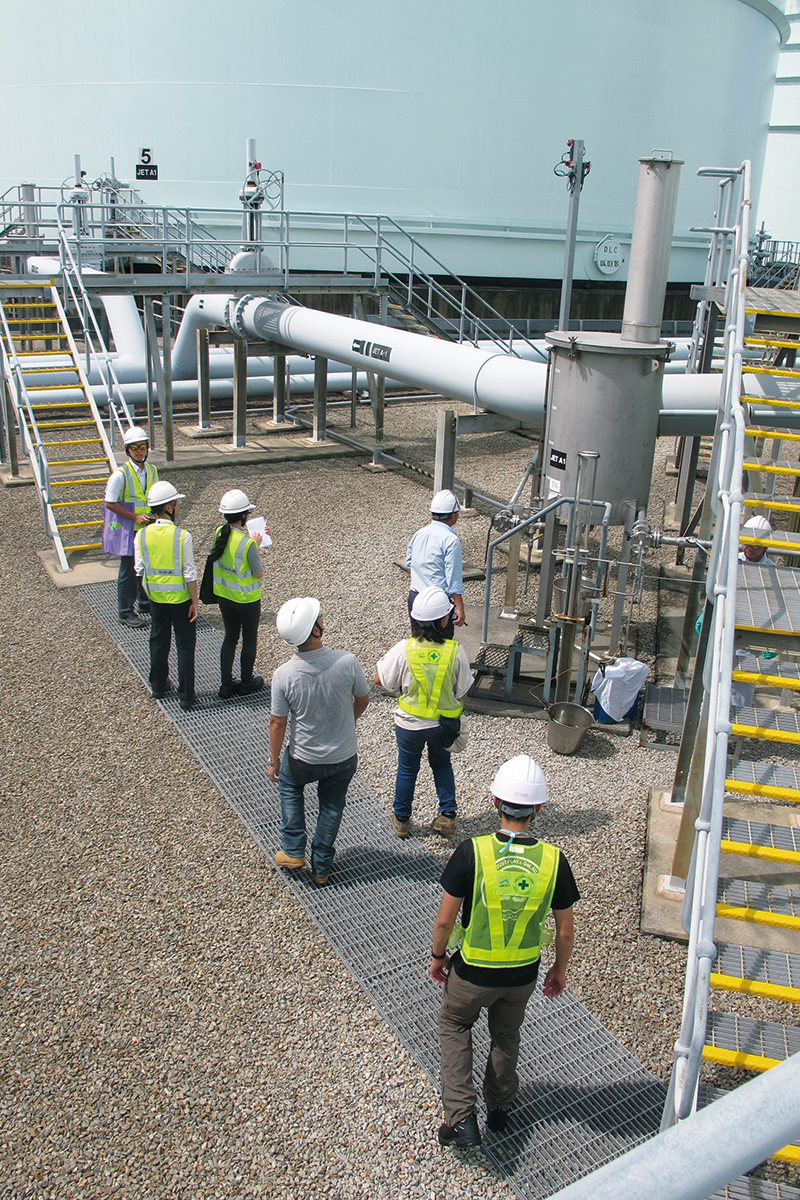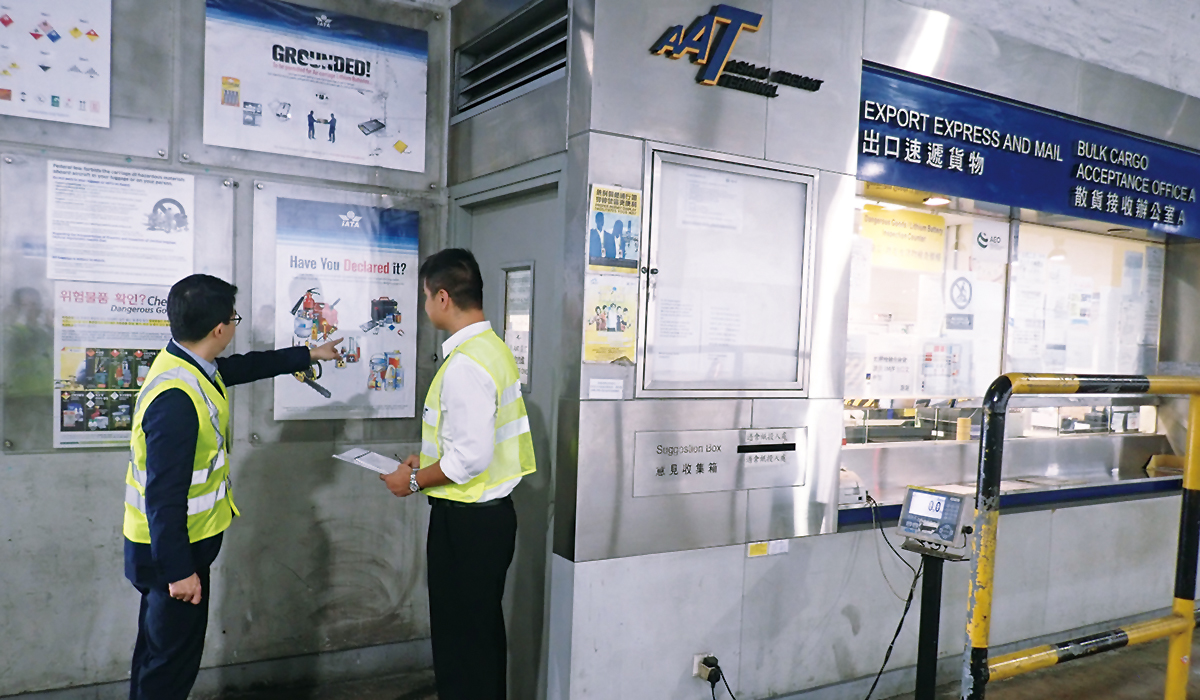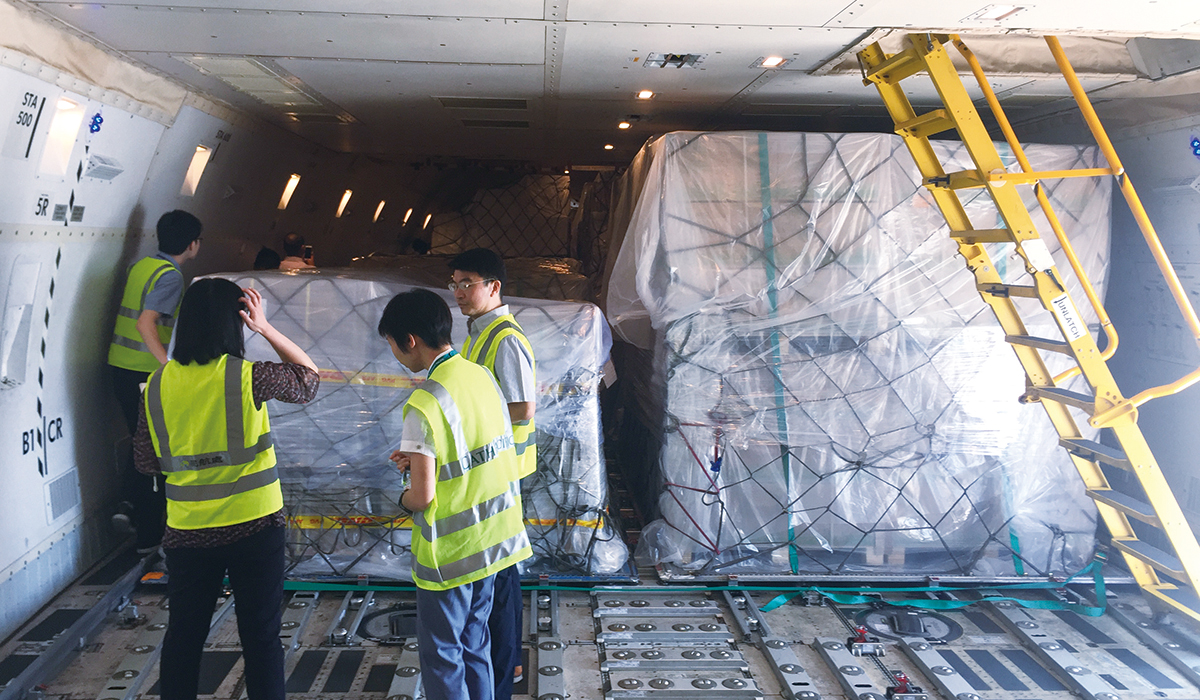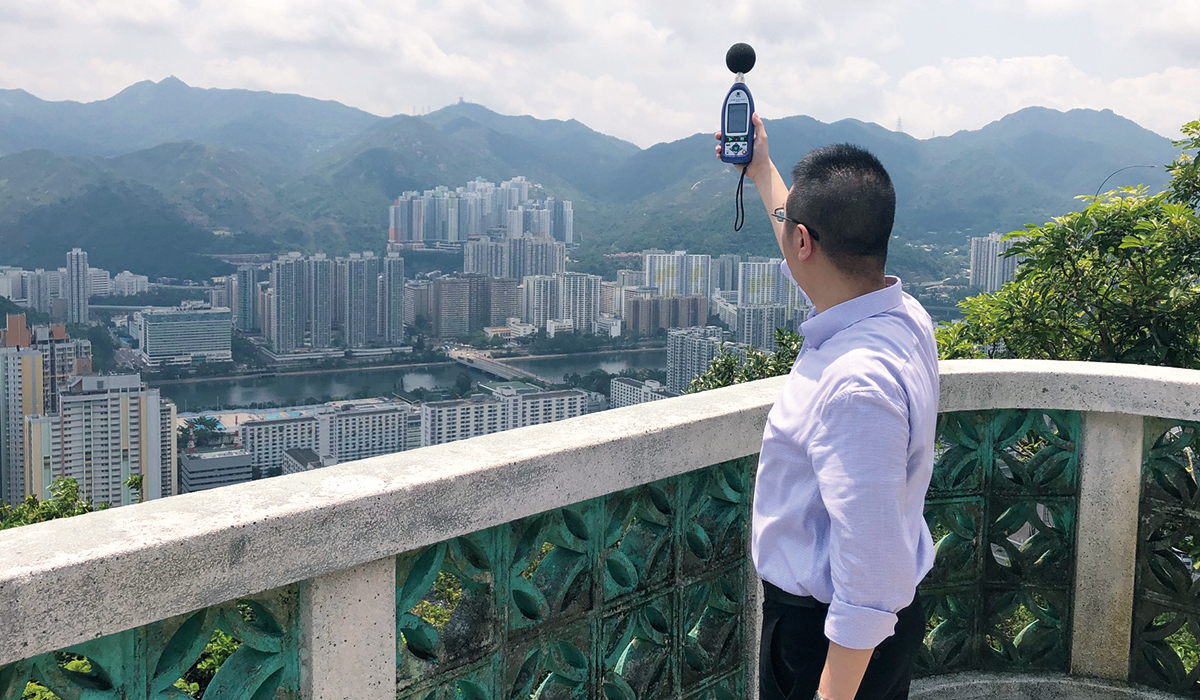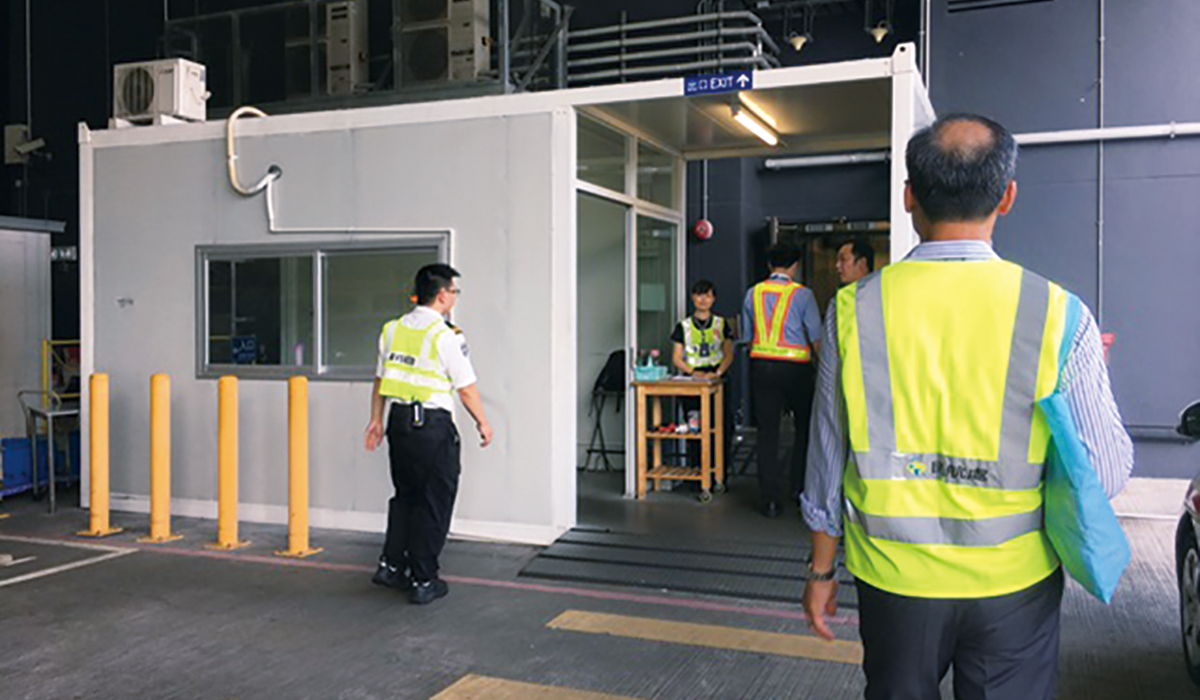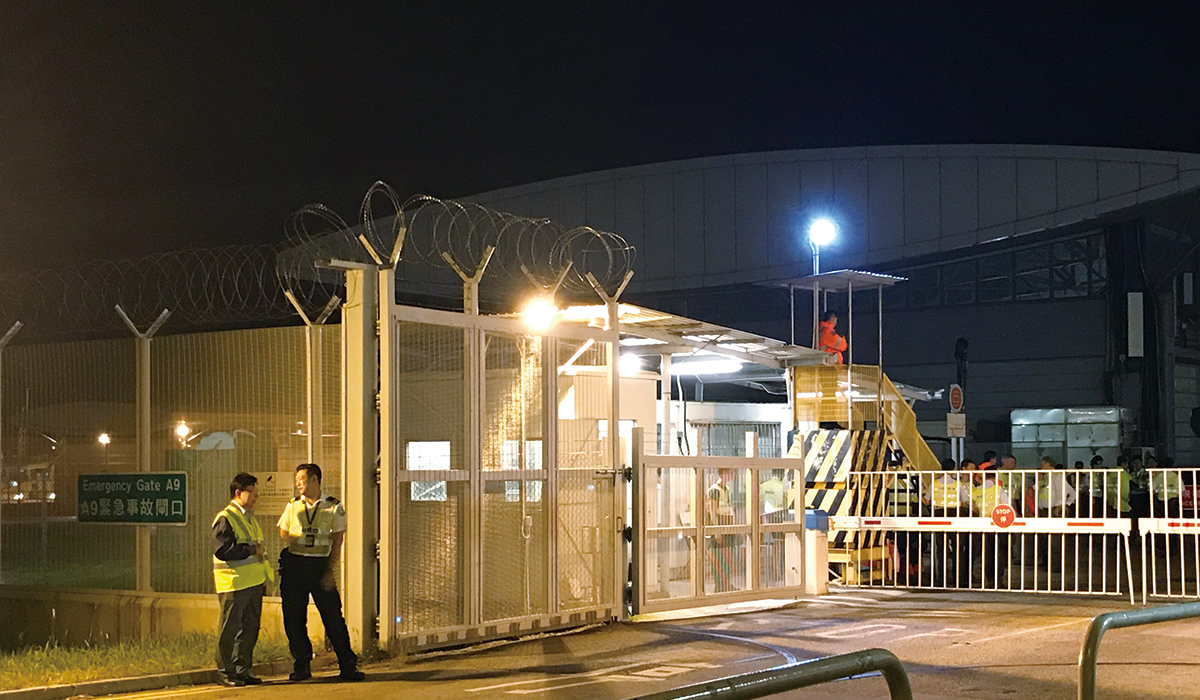The Airport Standards Division (APSD) is responsible for the regulatory functions in respect of airport safety, aviation security, control of obstructions, and safe transport of dangerous goods by air. The division also facilitates the development of heliports, monitors the safety and security of heliport operations, develops and implements noise mitigating measures, assesses and monitors the development of the Hong Kong International Airport (HKIA) expansion including the Three-Runway System (3RS), and assumes the role in coordinating airport facilitation.
Airport Safety
Aerodrome Licensing
The Airport Authority Hong Kong (AAHK) is granted an aerodrome licence by the CAD to operate HKIA. APSD continued to exercise safety oversight on the performance of AAHK to ensure its compliance with the aerodrome licensing requirements.
The division carried out 14 audits and 130 inspections during the year covering both ad-hoc and scheduled airside maintenance works, conditions of airfield pavements, visual aids, other facilities required for aircraft operations, implementation of the Safety Management System, emergency planning, airport rescue and fire fighting services, aircraft ground operations provided by AAHK and its ground handling agents, as well as airfield expansion projects. The division also participated in the franchisee audits carried out by AAHK and monitored investigation of aircraft ground incidents to ensure that effective oversight was duly exercised by AAHK on franchisees' safety performance and appropriate corrective measures had been taken by responsible parties to prevent recurrence.
Several large-scale airfield maintenance projects were undertaken by AAHK during the year. One such project was the South Runway resurfacing and rehabilitation. This project, started in November 2017, was scheduled for completion in July 2019. Besides, AAHK planned to replace the fluorescent lighting boxes of the Movement Area Guidance Signs by LED lighting boxes in phases. First phase of the replacement works started in March 2019 and the entire project to replace the signs was targeted for completion by end 2020. Moreover, AAHK continued with the construction of the elevated passenger corridor connecting Terminal 1 and North Satellite Concourse. To ensure aviation safety and minimal extent of disruption that may be brought to normal airfield operations, the division closely monitored the progress, conducted inspections and provided comments and recommendations for AAHK from time to time on these works.
To cater for the continuous traffic growth, AAHK continued to ensure that the development of the Midfield Area of HKIA proceeded as scheduled. The Midfield Development Phase Two which provided a taxiway and 10 remote parking stands, including three being capable of accommodating Code F aircraft, was completed in November 2018. In addition, AAHK commenced the Midfield Remaining Area development works in 2017. The first phase of the project which provided one taxilane and 11 remote parking stands was completed in March 2019. The second phase of the project involving construction of another new taxilane and 13 additional remote parking stands is scheduled for completion in 2020. Prior to commissioning of the new facilities, APSD closely liaised with AAHK and conducted on-site inspections to ensure that the design, infrastructures and aerodrome operations are in compliance with the aerodrome licensing requirements.
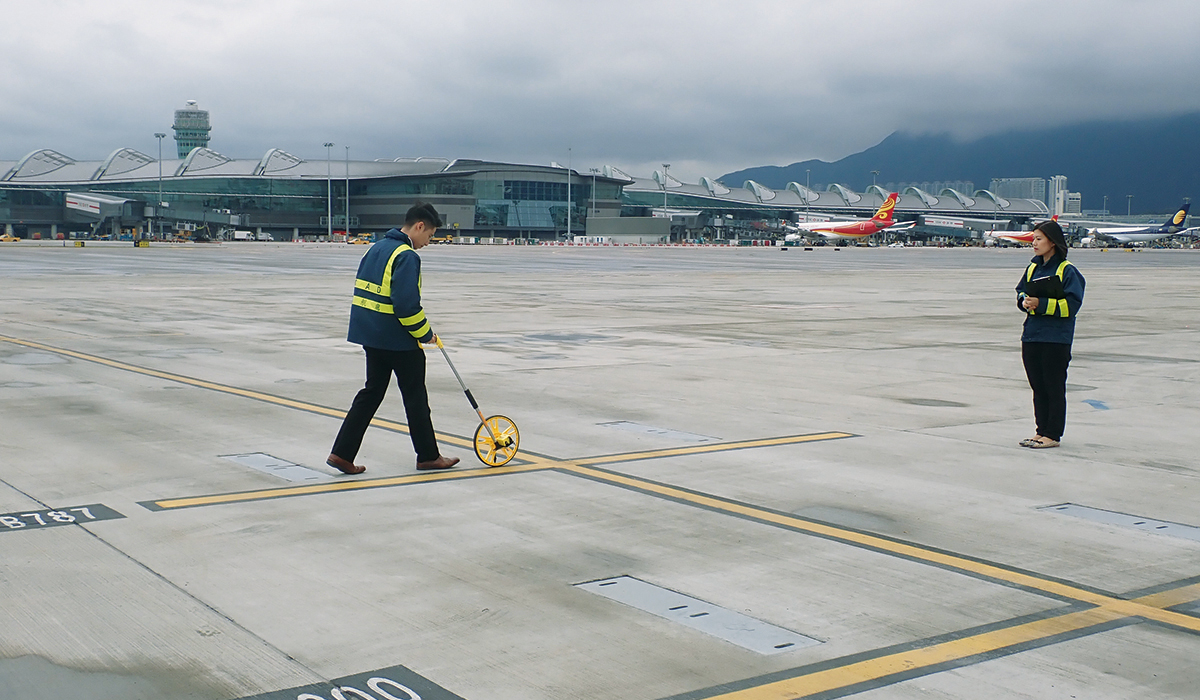
APSD officers conducted site inspection prior to the commissioning of airfield facilities to ensure their compliance with the aerodrome licensing requirements.
During the year, AAHK introduced a number of new initiatives at HKIA. To continuously improve apron operational efficiency and safety standards, as well as to fulfil HKIA's green airport pledge, AAHK implemented the initial phase of Ground Services Equipment (GSE) Pooling Scheme at designated stands of Midfield Concourse and Midfield Remaining Area in July 2018. Under the new Scheme, AAHK provided on-stand GSE, which mainly are electric GSE, for ramp handling operators' aircraft turnaround handling. The scheme will be expanded by phases to cover Terminal 1, North Satellite Concourse and the future Third Runway Concourse. In the second quarter of 2018, AAHK also commenced trials of automated guided vehicle and airbridge auto-positioning function. APSD will continue to provide regulatory advice on new development projects, new facilities and new operating procedures introduced by AAHK to further enhance airport safety and operations efficiency.
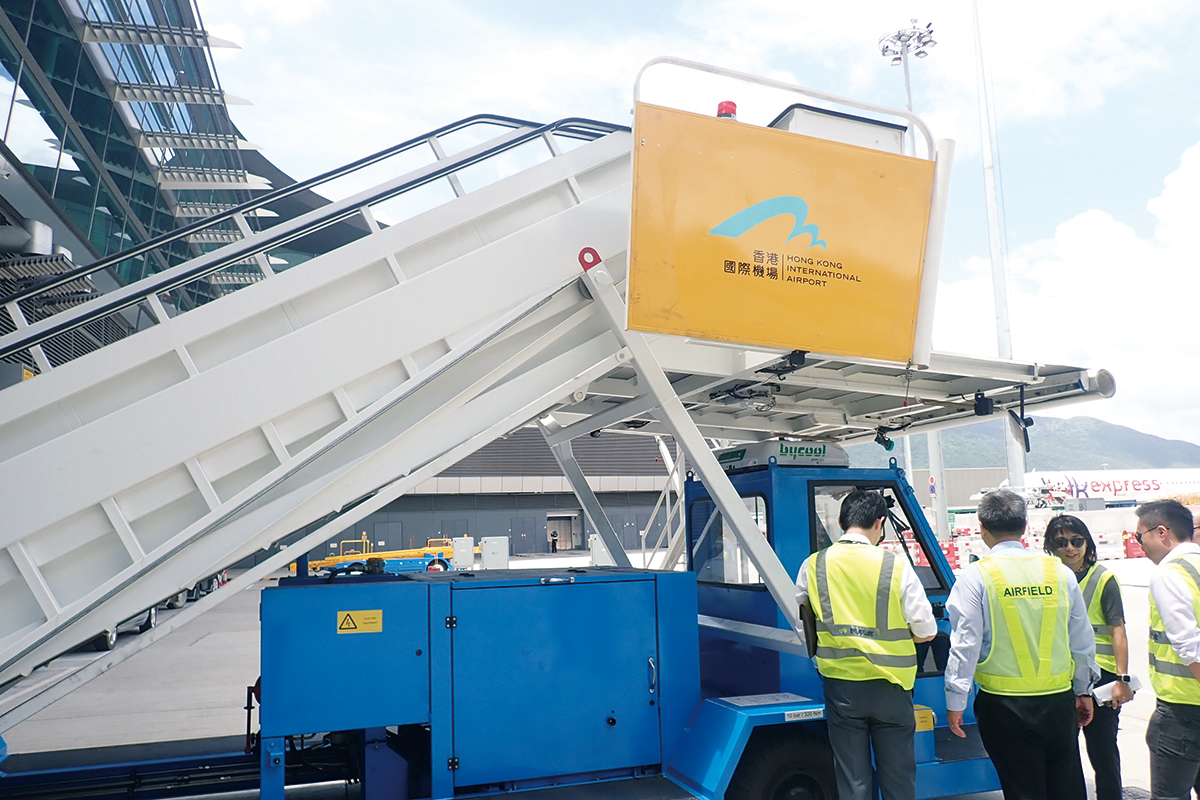
APSD officers inspected the new equipment provided by AAHK under the Ground Services Equipment Pooling Scheme.
For the purpose of testing the emergency response procedures and enhancing the coordination between the aerodrome operator and relevant responding parties in dealing with aircraft accidents, AAHK conducted a number of drills and exercises throughout the year. APSD actively participated in the planning meetings and conducted regular inspections on these drills and exercises. One of them was the annual full-scale aircraft crash exercise conducted in November 2018. The exercise simulated a rescue operation for an arrival Airbus A320 aircraft which veered off the North Runway and ditched into the 3RS reclamation site while its starboard engine crashed into a deep cement mixing barge causing fire on the barge. The exercise was held at the 3RS works area for the first time. Different responding parties, including AAHK, contractors of 3RS reclamation works, relevant government departments and the participating airline, took part in the exercise to test the emergency procedures and responses in dealing with an aircraft accident. The division oversaw the preparation and operation of the exercise from planning until completion and provided regulatory advice and recommendations for AAHK and relevant responding parties to further enhance their emergency procedures and responses.
APSD continued to monitor AAHK's aerodrome safety management activities to ensure compliance with the International Civil Aviation Organization (ICAO) Standards and Recommended Practices (SARPs). During the year, AAHK updated their risk assessment register for the new airfield development projects and procedures to record those risks arising from changes to existing operational environment. The division provided feedback on the maintenance of the register for follow up actions by AAHK.
Safety Regulation
Heliport Operations and Development
APSD continued to monitor the safety of heliport operations and to provide regulatory advice on the planning and design of the domestic heliports as well as on the development of cross-boundary heliports.
During the year, the Government Flying Service planned to establish a Kai Tak Division at the ex-Kai Tak Runway Tip under a co-location arrangement with the planned cross-boundary heliport. The division provided technical advice on the overall design while preserving the commercial viability of the heliport site. Operational space, including a shared-use take-off and landing pad, a dedicated helicopter stand and office and passenger handling areas, has been reserved for the future development of a cross-boundary heliport. The project has proceeded to construction phase.
Control of Obstructions
Airport Height Restrictions (AHR) are established to protect aircraft flight paths and radio navigational aids. APSD assessed and provided regulatory advice on various building and development projects and feasibility studies to ensure their compliance with AHR and other applicable aviation safety requirements. The major development projects and studies outside HKIA assessed during the year included the Hong Kong-Zhuhai-Macao Bridge Hong Kong Boundary Crossing Facilities (HKBCF) and Hong Kong Link Road (HKLR), Topside Development of the HKBCF, Tuen Mun-Chek Lap Kok Link (TM-CLKL), Tung Chung New Town Extension and Lantau Development. The HKBCF, HKLR and part of the TM-CLKL were commissioned in the last quarter of 2018. The major development projects within HKIA assessed included HKIA's Midfield Remaining Area Development, North Commercial District Development, Reclamation and Construction Works for the Expansion of HKIA into a 3RS. In addition, regarding the project to expand HKIA into a 3RS planned by AAHK, the division provided regulatory advice on AHR requirements and the associated Marine Exclusion Zones (MEZs) for an expanded airport system in order to ensure aviation safety of the flight paths.
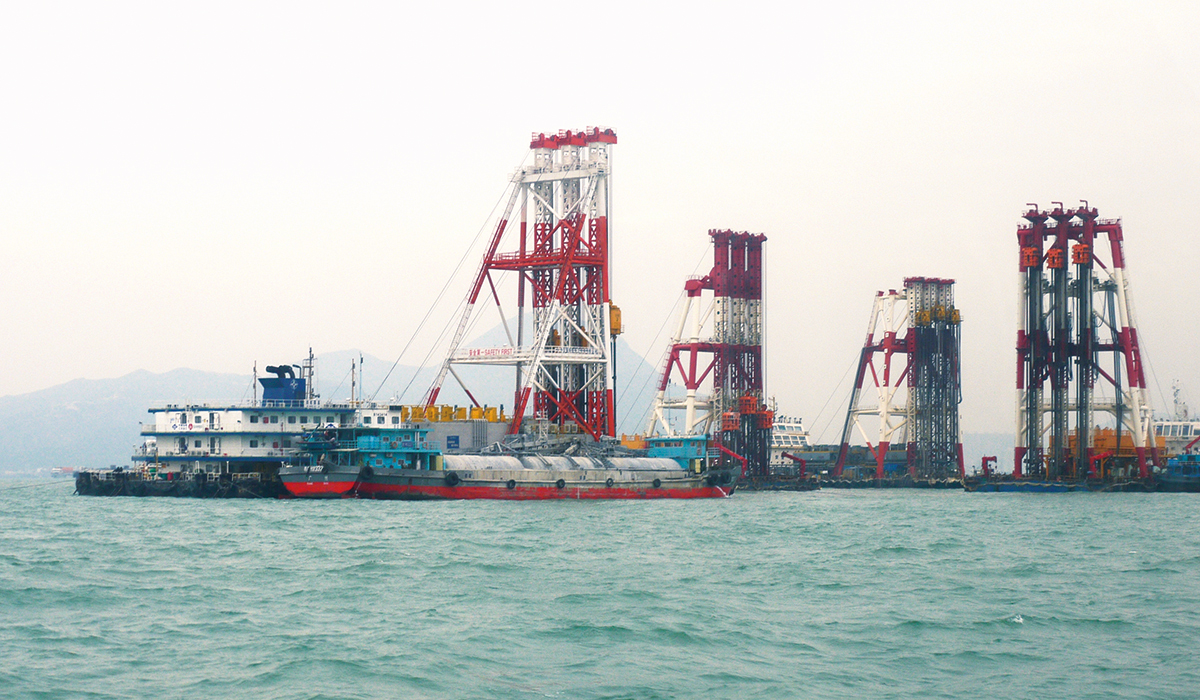
To ensure aviation safety, high headroom deep cement mixing barges had to comply with the Airport Height Restrictions requirement before conducting reclamation works for the 3RS at HKIA.
As the reclamation works and construction works at the waters around HKIA for the HKBCF, HKLR and TM-CLKL, and the reclamation works to expand HKIA into a 3RS proceeded in 2018, a large number of working vessels were deployed by contractors to work in close proximity to HKIA under the flight paths of the two-runway airport. APSD took a proactive approach to direct the AAHK's project consultants and contractors to commission a vessel/machinery height monitoring system. It was designed to operate round-the-clock for monitoring the highest altitude of vessels/machinery working at the reclamation and work sites near HKIA and enhancing the contractor's compliance with the AHR requirements and therefore minimising any adverse effect to flight paths avoided. This arrangement was particularly important for the division's consideration of applications for temporary AHR exemption involving high air draft vessels. APSD closely monitored the performance of contractors in complying with the AHR requirements for submission and implementation of corresponding improvement measures as and when necessary. The division also participated in various meetings with AAHK's project consultants and contractors, and offered regulatory advice from time to time to ensure the construction methods including the choice of construction plants would fully comply with the AHR requirements.
This year, the division issued 244 temporary AHR exemptions for the construction works in the territory and vessel operations in the vicinity of the Airport Island, of which 51 were issued in relation to the works of HKBCF, HKLR and TM-CLKL projects, 161 associated with the reclamation works for the expansion of HKIA into a 3RS, and the remaining 32 to other small-scale or one-off operations.
With the assistance of the Marine Department, APSD continued to ensure integrity of the MEZs established in the vicinity of the Airport Island to safeguard the operation of aircraft and radio navigational aids. During the year, five prosecutions against illegal entry into the MEZs were instituted by the Marine Department.
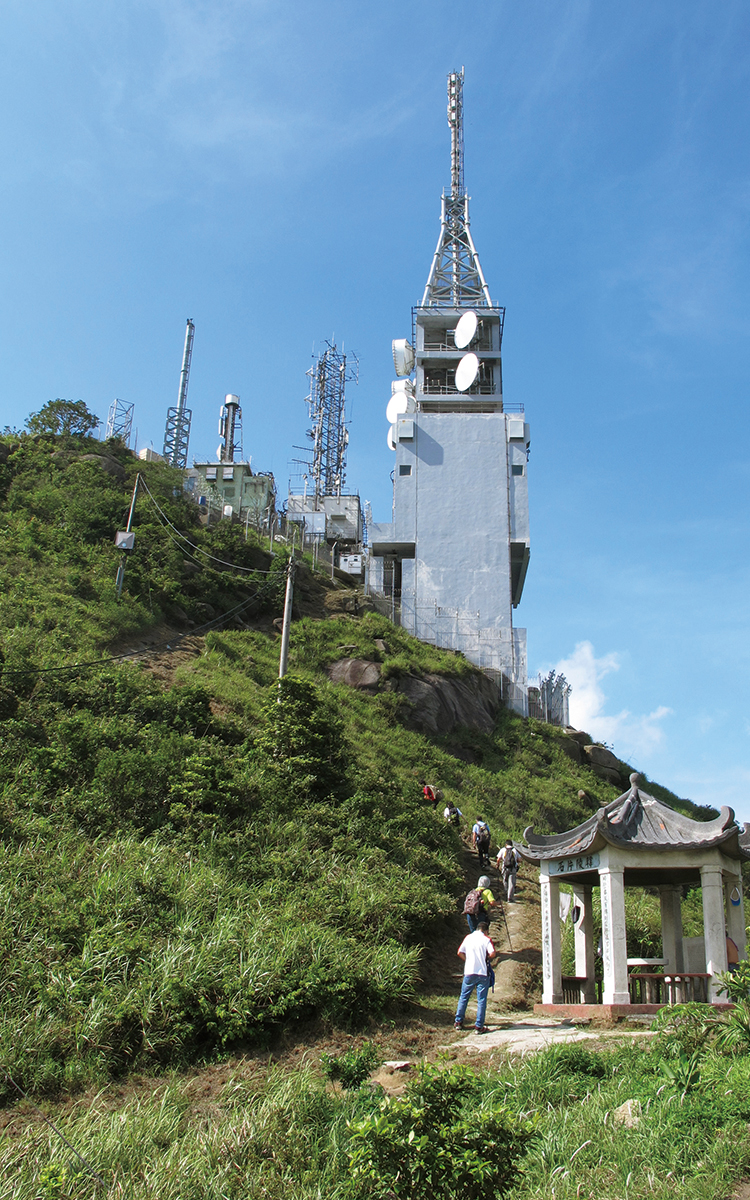
APSD officers conducted a joint site visit with officers of the Radio Television Hong Kong and the Electrical and Mechanical Services Department to the Frequency Moderation Transmission Station in Tuen Mun for the planning and provision of a new obstacle light station.
HKIA Expansion into 3RS Operations
While AAHK is pursuing detailed design and commissioning of HKIA airport expansion into 3RS operations, APSD has undertaken monitoring of the airport expansion to ensure that 3RS related project works are in full compliance with the relevant ICAO requirements on aerodrome. The division also worked closely with AAHK and other government departments to formulate expanded AHR requirements and associated regulation of marine traffic for the purpose of safeguarding the future 3RS operations.
Prohibition of Lights Endangering Aircraft Operation
To ensure that aviation safety would not be compromised, APSD continued to monitor and give regulatory advice on the use of lasers, search lights and firework displays at different shows such as "A Symphony of Lights", New Year Countdown Celebrations as well as other lighting displays at building facades, especially illuminated advertisement signs.
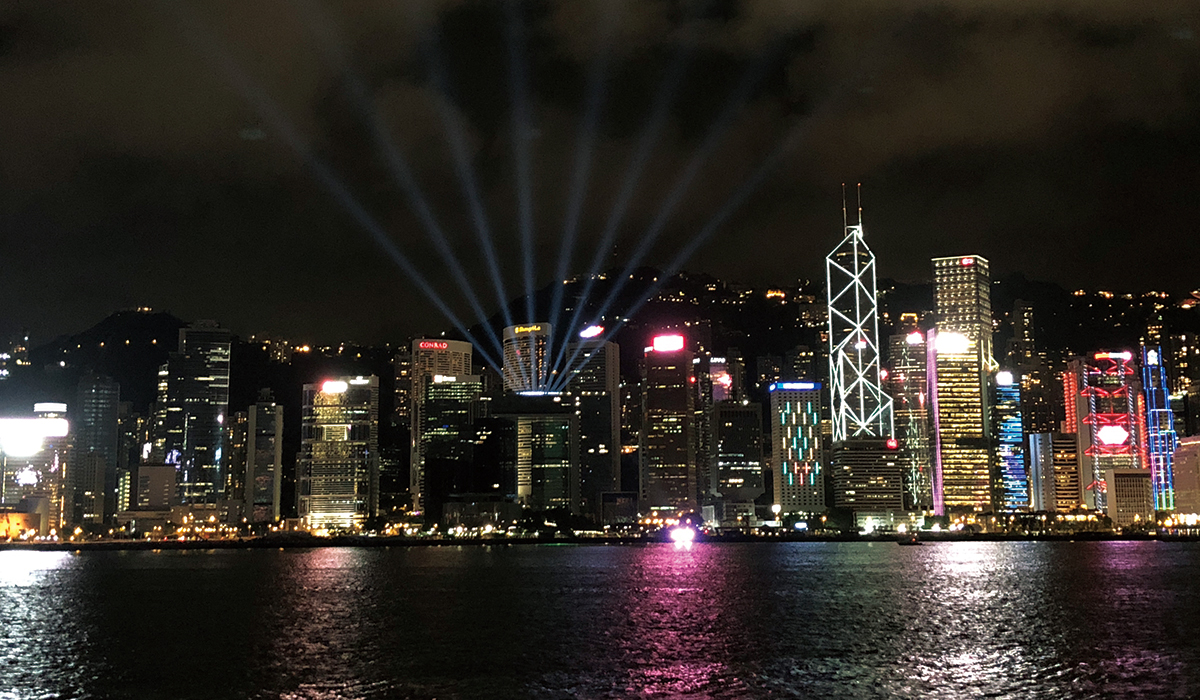
Light testing was arranged for building owners who wished to join "A Symphony of Lights" show for Hong Kong.
General Aviation Activities
APSD continued to monitor the safety of recreational aviation activities, including paragliding, kite flying and model aircraft flying to ensure that these activities were conducted in compliance with applicable aviation safety regulations and would not affect civil aircraft operations.
Carriage Of Dangerous Goods
The Dangerous Goods Office (DGO) of APSD regulates the transport of dangerous goods by air based on the ICAO and local legal requirements. DGO has established a dangerous goods permission system whereby airlines which satisfy all pertinent safety requirements will be granted a permission to carry dangerous goods to, from or over Hong Kong. During the year, six new and 55 renewal applications for dangerous goods permissions were processed. At the end of March 2019, 100 airlines have been granted permissions. The office also approved 40 organisations for conducting dangerous goods training programmes for airlines, air cargo terminals, freight forwarders and shippers. DGO conducted regular and ad-hoc inspections to airlines, air cargo terminals, freight forwarders, shippers and training organisations to ensure their compliance with the safety requirements on air transport of dangerous goods. For any non-compliances that were identified during inspections, the concerned entities were required to submit and implement corrective action plans to the satisfaction of the CAD to prevent recurrence.
Promulgation of Safety Requirements
To enhance the awareness of the industry and the public of the safety requirements on air transport of dangerous goods, DGO continued to promulgate the safety requirements through various means. During the year, DGO distributed leaflets and posters, reviewed and updated the Department's website, and promoted safety requirements on air transport of dangerous goods when replying enquiries, and reminded them to abide by the relevant safety requirements. In addition, DGO issued four advisory circulars to the air cargo industry during the year concerning the latest safety requirements on air transport of dangerous goods.
Legislation
To align the two sets of local legislation with the latest requirements of the ICAO Technical Instructions for the Safe Transport of Dangerous Goods by Air, DGO continued to take forward the related legislative amendment process during the year with the support of the air cargo industry.
Dangerous Goods Incidents
The incidents which occurred in the year were mainly related to undeclared dangerous goods. DGO conducted investigations into all these incidents for the purpose of preventing recurrence. The CAD has also been taking prosecution actions against the concerned entities that were found contravening the dangerous goods legislation. The CAD had, in close cooperation with the air cargo industry, implemented the "Enhanced Control, Surveillance and Inspection Measures for Safe Transport of Dangerous Goods by Air" in October 2018 in order to step up the regulatory efforts in managing undeclared and mis-declared dangerous goods occurrences. In addition, useful incident information was disseminated to the air cargo industry in Hong Kong and other aviation authorities.
Aircraft Noise Management
The CAD is conscious of the impact of aircraft noise on the community and has implemented a series of noise mitigating measures based on the guidelines of ICAO. The division monitored the implementation of various noise mitigating measures and the aircraft noise situations in various districts through the computerised Aircraft Noise and Flight Track Monitoring System. The system comprises 16 outdoor noise monitoring terminals which are installed at strategic locations of the Hong Kong territories to monitor and record noise data for aircraft operating into and out of HKIA, and a computer system which correlates the noise data collected through these noise monitoring terminals with the actual aircraft flight tracks detected by the CAD's radar system.
In order to reduce the impact on the local communities as a result of aircraft operations, the CAD implemented a series of aircraft noise mitigating measures. Apart from the aircraft noise abatement operational procedures, the CAD has prohibited aircraft not meeting the relevant aircraft noise standards from landing and taking off in Hong Kong. Since 2002, aircraft not complying with the noise standards stipulated in Volume I, Part II, Chapter 3 of Annex 16 to the Convention on International Civil Aviation (Chapter 3 noise standards) are not allowed to operate in Hong Kong. To strengthen this aircraft noise mitigating measure, starting from 2014, the CAD has imposed further restrictions on aircraft which are marginally compliant with the Chapter 3 noise standards to land and take off in Hong Kong. To further alleviate aircraft noise disturbance to local communities, starting from end of March 2019, aircraft that do not comply with the noise standards stipulated in Volume I, Part II, Chapter 4 of Annex 16 to the Convention on International Civil Aviation, or equivalent, are not allowed to operate at HKIA between 10 pm and 7 am the following day. The CAD will review this arrangement from time to time and closely monitor the latest developments of ICAO, the international aviation industry and the operation of HKIA in considering the need to step up the relevant requirement.
During the year, the division handled 337 aircraft noise complaints. Detailed investigations were carried out into every single case and the results would be explained to the complainants. With a view to enhancing the understanding of the noise mitigating measures and noise monitoring work, representatives of the division attended various meetings with the District Councils and local residents.
Aviation Security
Security Oversight of Operators at HKIA
APSD ensured that AAHK and the operators at HKIA, including tenant restricted area operators, aircraft operators and aircraft catering supplies and stores operators, complied with the requirements in the Hong Kong Aviation Security Programme through audits and inspections.
HKIA Developments
During the report period, the division processed five proposals of restricted area designations of HKIA under the Aviation Security Ordinance. The designations involved were related to the reopening of the Terminal 1 of Asia Airfreight Terminal, the expansion of Departure Immigration Hall North, the interfacing works connecting the Annex Building to Level 5 of the Passenger Terminal 1, the extension of baggage belt corridor on Level 6 of the Passenger Terminal 1 to the Annex Building, and the expansion of the Food Court in the airside area on Level 7 of Passenger Terminal 1. The division conducted site assessments to ensure that adequate security control measures were provided for the protection of the re-designated restricted areas. The division also worked with AAHK in the 3RS related projects and other facility development projects to ensure that they complied with relevant aviation security requirements.
Air Cargo Security
Under the Regulated Agent Regime (RAR), a cargo agent registered as a Regulated Agent (RA) with the CAD is required to provide security control measures on consignments of air cargo and apply screening on prescribed sources of air cargo. As at 31 March 2019, there were 1 500 RAs registered with the CAD. APSD continued to monitor compliance of the RAs with the requirements of the RAR through regular inspections, and required them to submit and implement corresponding corrective action plans when any non-compliance was identified.
Pursuant to a new policy direction announced by ICAO on air cargo security, the division launched the Regulated Air Cargo Screening Facility (RACSF) scheme in October 2018 to enable and regulate air cargo screening at off-airport locations. This new measure not only aims to enhance Hong Kong's overall screening capacity for export air cargo, but also befits the modus operandi and development of the air cargo industry with a view to enhancing air cargo security whilst maintaining Hong Kong's leading position as an international air cargo hub.
Facilitation
Apart from participating in the Airport Facilitation Committee by APSD for monitoring the implementation of the SARPs of ICAO Annex 9 at HKIA, senior management team of the CAD and the stakeholders established the Hong Kong Air Transport Facilitation Committee in July 2018 for the purpose of coordinating facilitation activities between relevant departments, agencies and other organisations at strategic level. Besides, to facilitate crew members of Hong Kong registered aircraft operators in discharging their flight duties, APSD issued Crew Member Certificates (CMC) in accordance with ICAO Annex 9. During the year, 2 367 CMC were issued.
International Activities
APSD continued to communicate with overseas aviation authorities to share information on best practices of security measures for enhancing the aviation security in Hong Kong, and participate in international meetings and programmes for monitoring the development of aviation security measures.
ICAO Aviation Security Panel (AVSECP)
APSD has been participating, as part of the Chinese delegation, in the ICAO AVSECP Meeting held annually in Montreal, Canada. The objectives of the AVSECP are to develop SARPs for the purpose of safeguarding civil aviation against acts of unlawful interference, and to identify and examine new and emerging threats against civil aviation.
Liaison with Overseas Aviation Security Authorities
APSD maintained very close liaison with other aviation security authorities. During the year, APSD met the aviation security authorities of the US, Thailand and Australia, as well as the Thailand Post while they visited Hong Kong, and shared the experiences and information with the division on aviation security matters.


